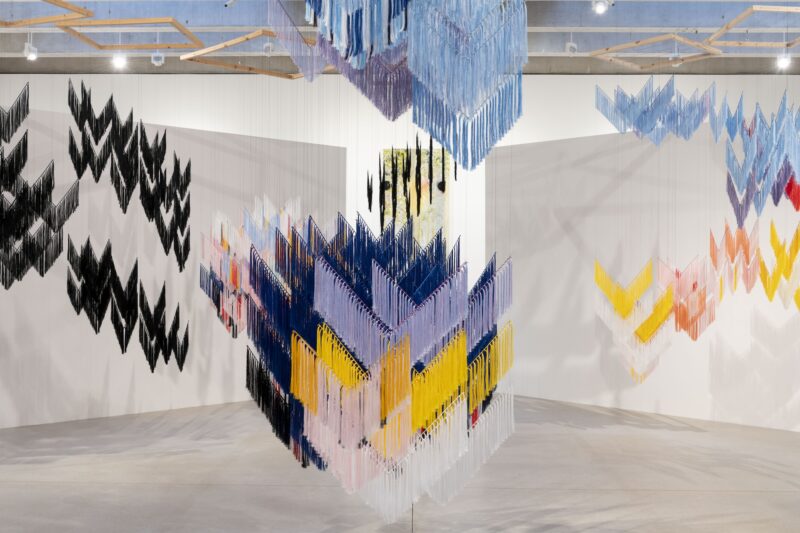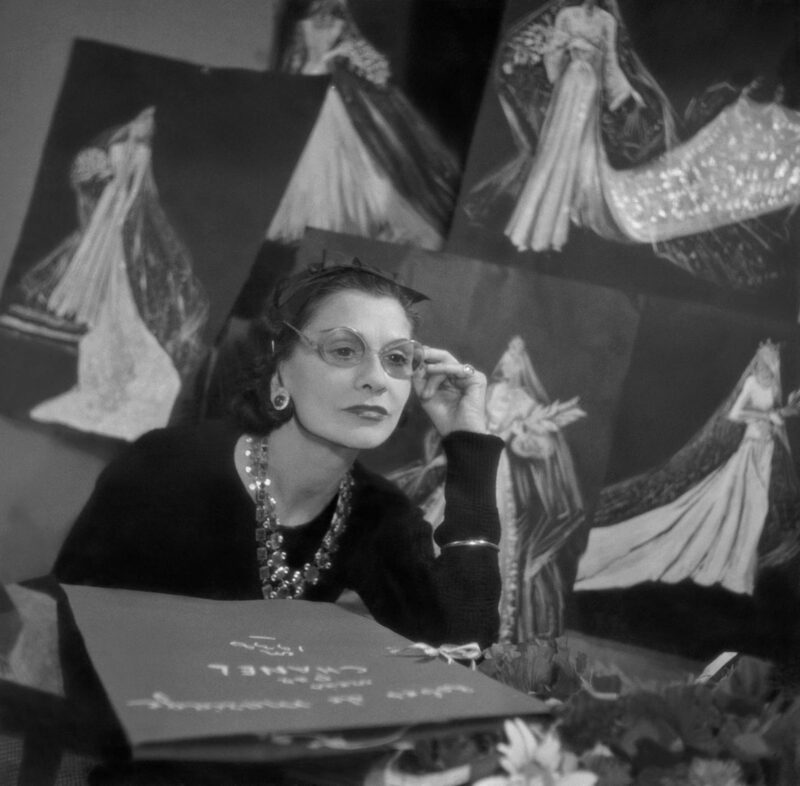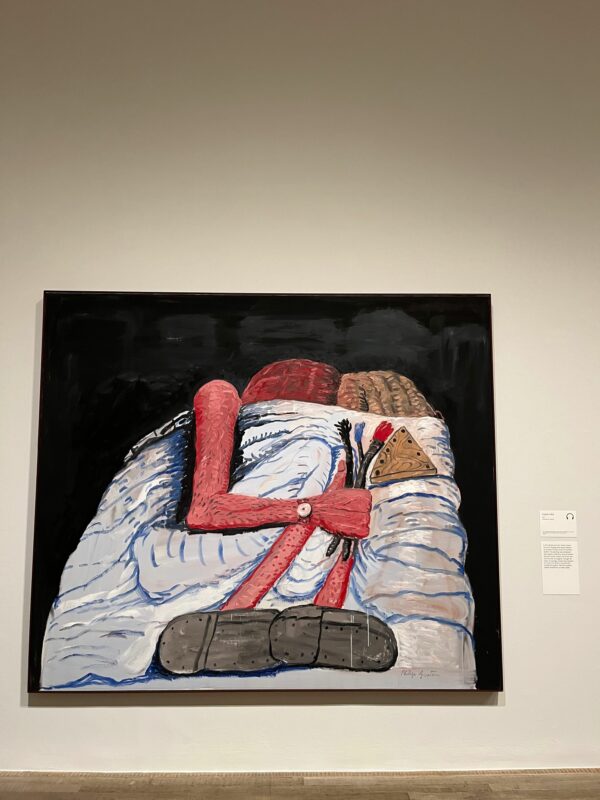
Last weekend played host to MozFest , an annual celebration of the diverse, creative internet community and the greater open internet movement.
Amongst the multitude of talks, workshops and discussions, there was also an exhibition of digital art – MozEx – spread out across all nine floors of Ravensbourne in Greenwich. Curated by the digital learning teams at the Tate and the V&A, the exhibition covered a range of digital artworks exploring the links between art, society and the digital world. The exhibits varied wildly in their treatment of the topic matter with some works taking on a purely documentative character, others turning out to be light-hearted technology experiments in aesthetics and the remainder engaging in a more critical fashion with the topics of web literacy, digital inclusion and accessibility, privacy, policy and hacking. This was to be expected given the diversity in terms of exhibitors, who ranged from artists to visual journalists to human rights organisations.
My visit started on the Saturday in the Digital Arts and Culture section of MozFest, home to workshops and discussions on bot art, computational music and robot drawing. Here’s a photo of the robot slaving away, creating an abstract masterpiece as directed by his human controller:
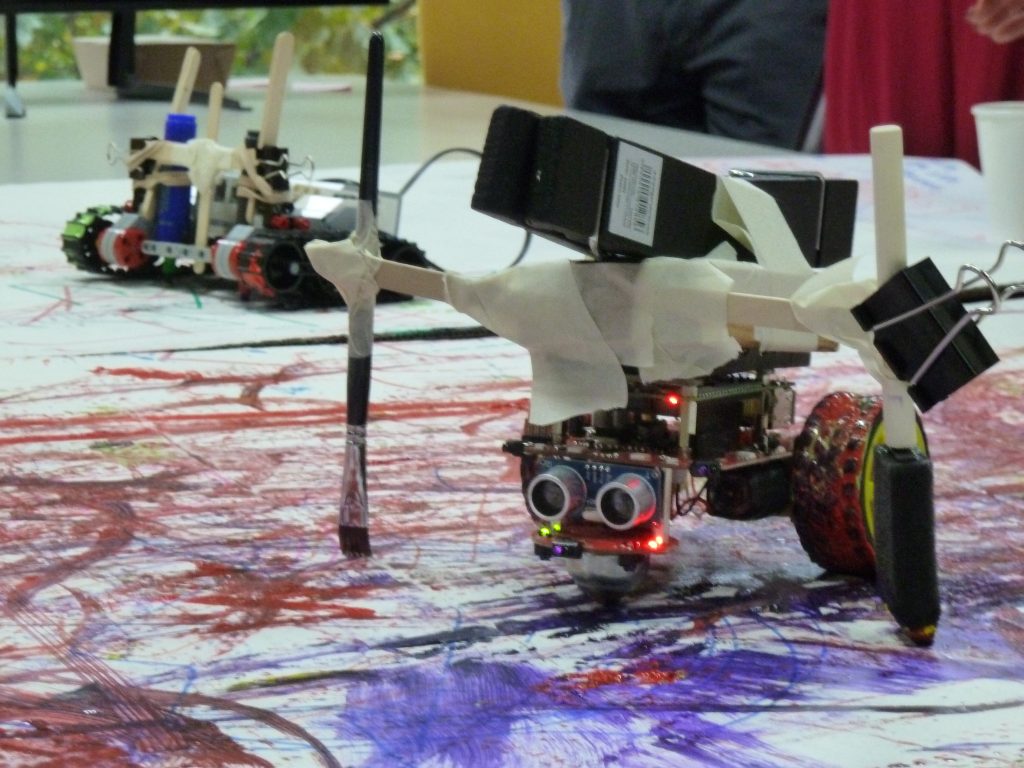
The MozEx exhibition itself had two spaces dedicated to showing the majority of the works, with the remainder scattered throughout the nine levels of the building, screened next to welcome stands and hidden away in corners by the workshop areas. This made my experience a bit of quest, but left me with a much better understanding of the 500+ sessions happening at the festival on topics ranging from DIY activist art to building offline internet.
Below are some of the most inspiring works, spanning the breadth of the open call selection from agency designs for humanitarian causes to experiments in computational aesthetics to critical renderings of our connected culture.
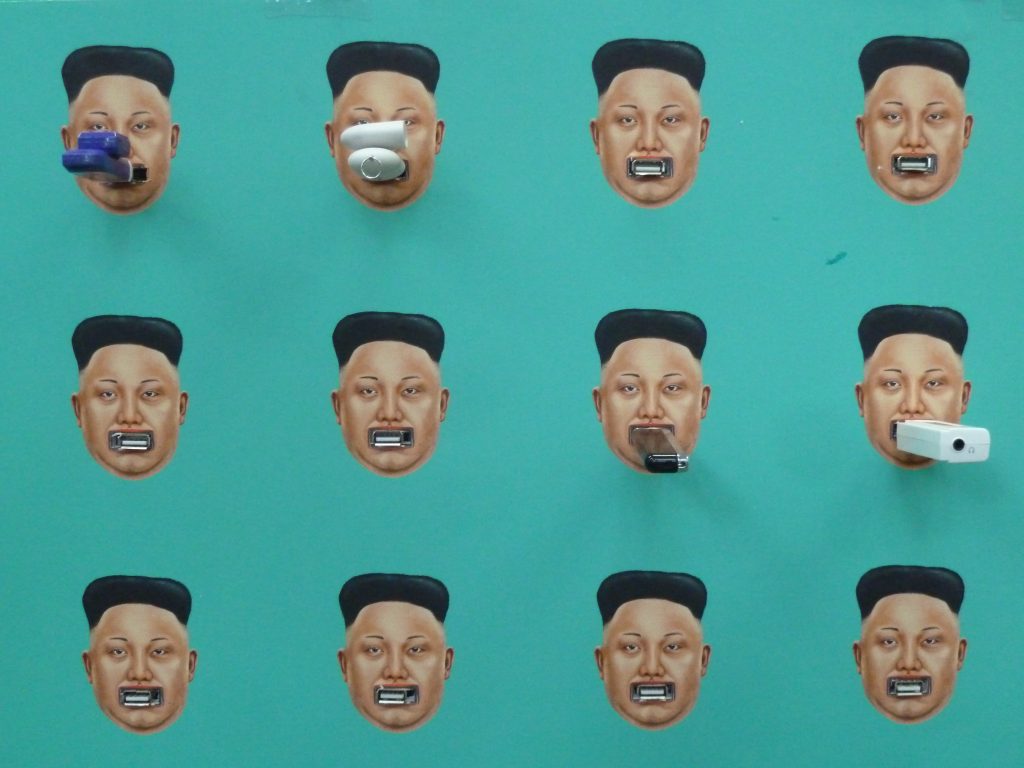
Who’s up for putting a USB stick in Kim Jon Un’s mouth? In its effort to get Western media into North Korea, the Human Rights Foundation created a 4 feet by 8 feet board with pictures of the ruler. His mouth is a USB socket where viewers can place their USB thumb drives. I asked if we could pass on our own messages this way, but alas no. The drives are formatted before use, then filled with the Human Rights Foundation’s own materials.
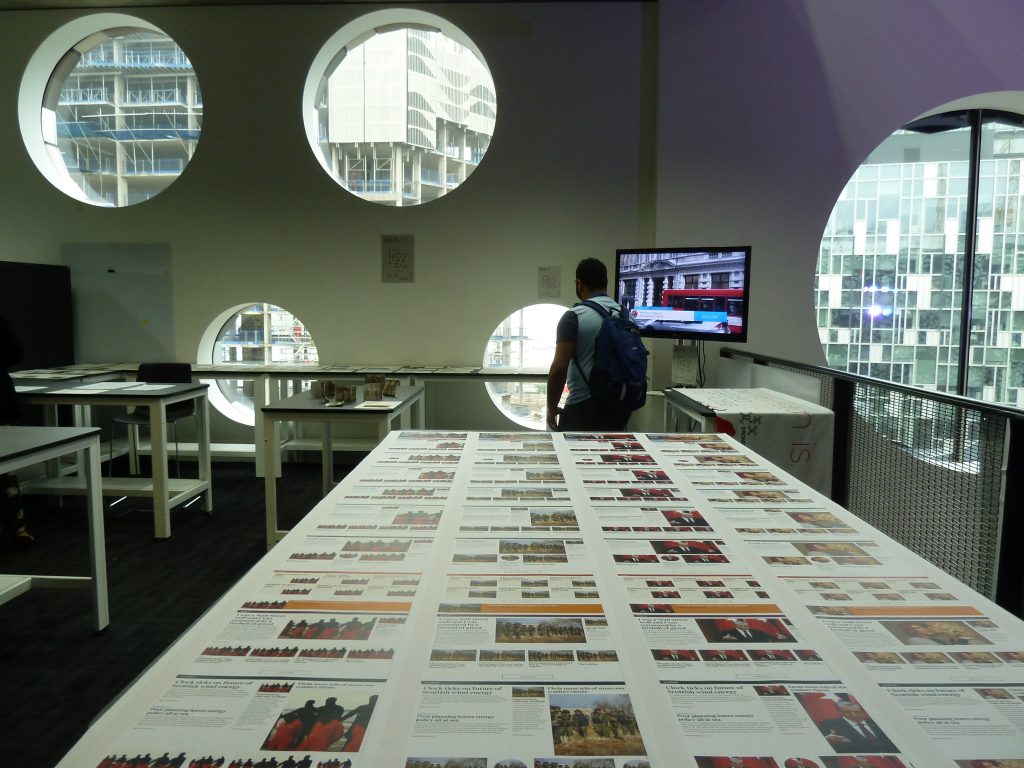
“HI JACK” by Boring and Sad extends the theme of controlled communication. Here, a web proxy replaces all images on a page with a fixed one. Acting as a middleman in the communication between the user’s browser and the HTTP server, the proxy server adapts and filters the content. The same image juxtaposed against vastly different texts begs us to question our media consumption habits – do we primarily derive meaning from the visuals or the text? And what happens when these send contradictory messages?
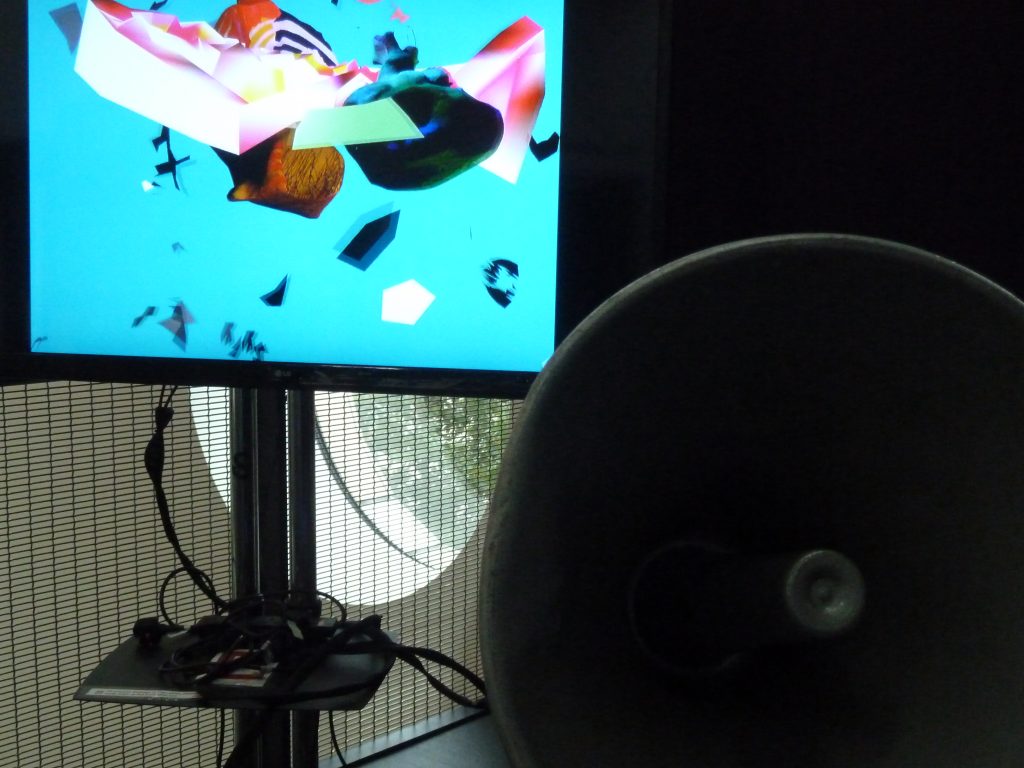
“Pardon the Dust” by Neale Willis deals with communicating messages not normally sent. I presume you don’t often delete a tweet and then look for a loud noise to announce it, yet this is exactly what happens in this installation. Deleting a tweet leaves behind an 18-digit code, which can then be fed through an algorithm to create a soundscape. The installation captures the live twitter stream and emits sound depending on what is being removed from the web at that point. Deletion becomes creation, what is hidden becomes visible.

Henrik van Leeuwen’s “Autonomous Network Architecture: The Discussions” visualises the cross-disciplinary art and technology panel discussion between critics and experts through light sculptures. Here, the discussions take the form of three light sculptures showing 3 chatbots who play the role of an artist / hacker (autonomy), the telco (network) and the architect/engineer (architecture), debating the need for autonomous network architecture. With each bot reacting to the other, the system creates an ever-changing discussion and alludes to the abundance of automatically generated data in our communication networks.

One of the works that stood out with its cosmic monochrome aesthetic was Claude Heiland-Allen’s “Monotone”. Composed of hundreds of thousands of fragile fractal texels, it reproduces the genesis of life as an organic character through fractal transformations. The particles on screen echo processes in nature from the origin of light to the creation of matter.
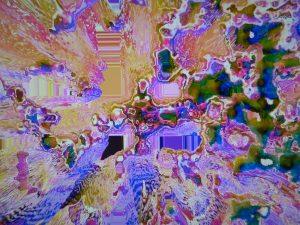
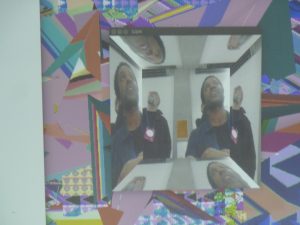
While wandering the exhibition space, I was lucky enough to bump into one of MoEx’s artists in residence – Antonio Roberts aka hellocatfood . He explained the process behind his works and gave a live demo, editing our video stream into one of his creations (I managed to hide behind the artist while taking pictures)
All in all, MozFest and MozEx were an enjoyable chaos with plenty of opportunities to learn how to make technology-based art and admire the digital works on display. Assuming you could find them, that is. Then again, with a festival like this you do sign up to explore the wilderness and hope the relevant art finds you.

